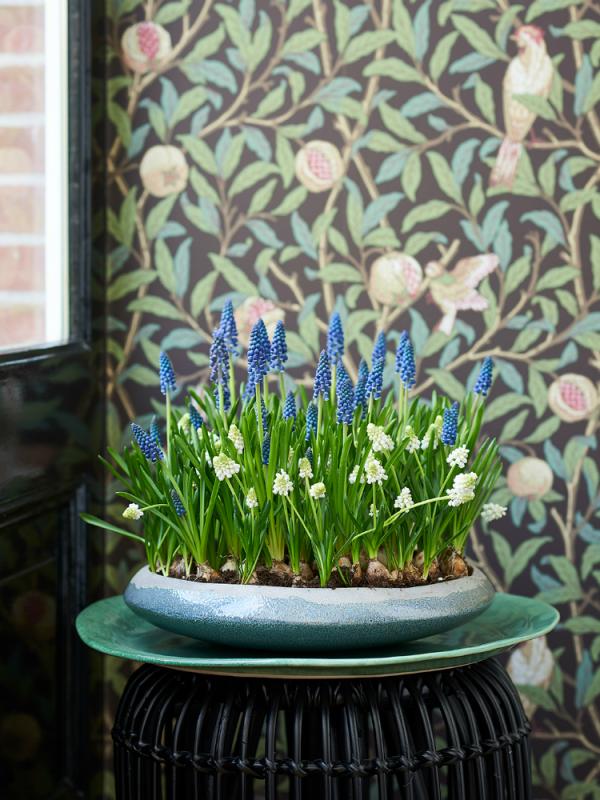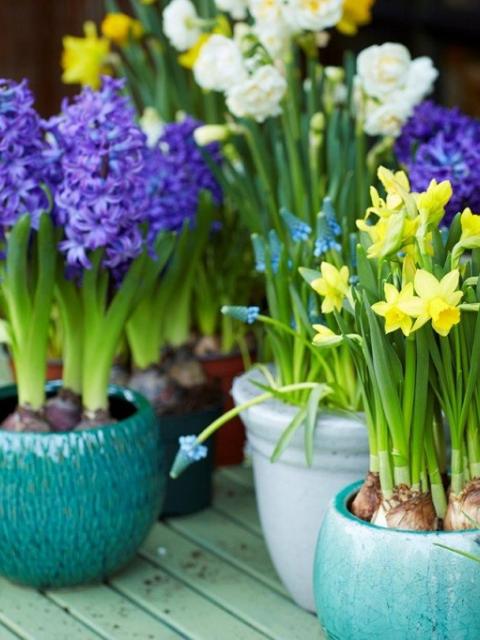Colours and shapes
Grape hyacinths derive their name from the grape-shaped flowers, which come in white, blue, lilac, purple and pink. The popular potted bulbs have a light musk fragrance, which is reflected in the scientific name Muscari.
Symbolism
The grape hyacinth is not just famous for its fantastic appearance; it’s also appreciated for its culinary and medicinal qualities. If you use grape hyacinth in your cooking* you should expect a slightly bitter flavour similar to spring onions. The Greeks eat them pickled. Their medicinal effect is particularly related to their high levels of vitamins C and antioxidants. The grape hyacinth does not have a clear symbolism, but if we look at the blue colour this plant represents self-confidence and responsibility.
Origin
The grape hyacinth is native to Bulgaria, Greece, Turkey and the Caucasus. Luckily we can also enjoy this cheerful harbinger of spring here nowadays. Interesting fact: according to the plant classification system the grape hyacinth can be classified in both the asparagus family and the hyacinth family.
One more thing: never just bite into a (cut) flower or plant - only use edible varieties from specialist suppliers that have been grown for consumption.






